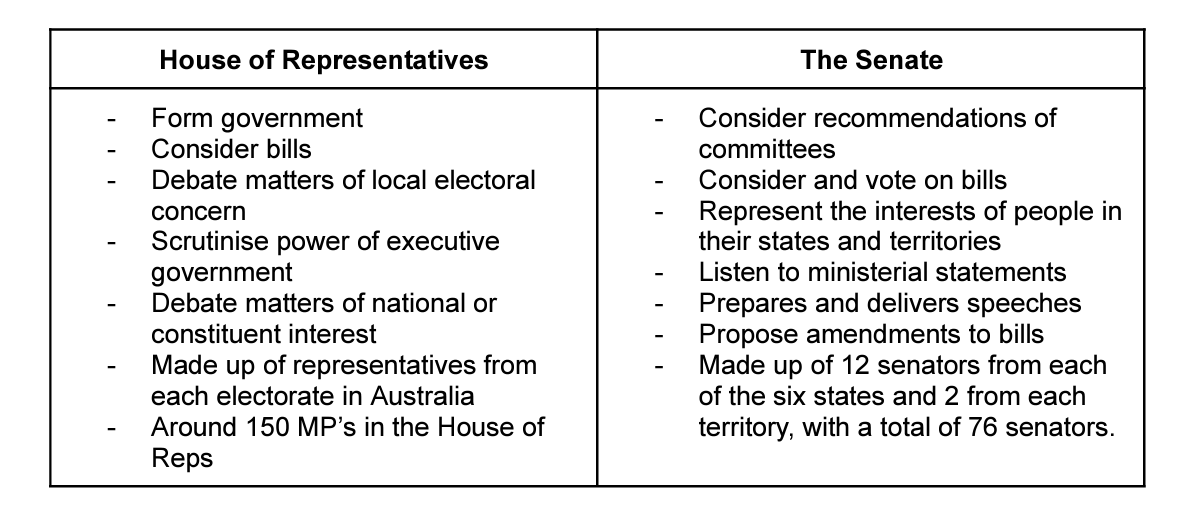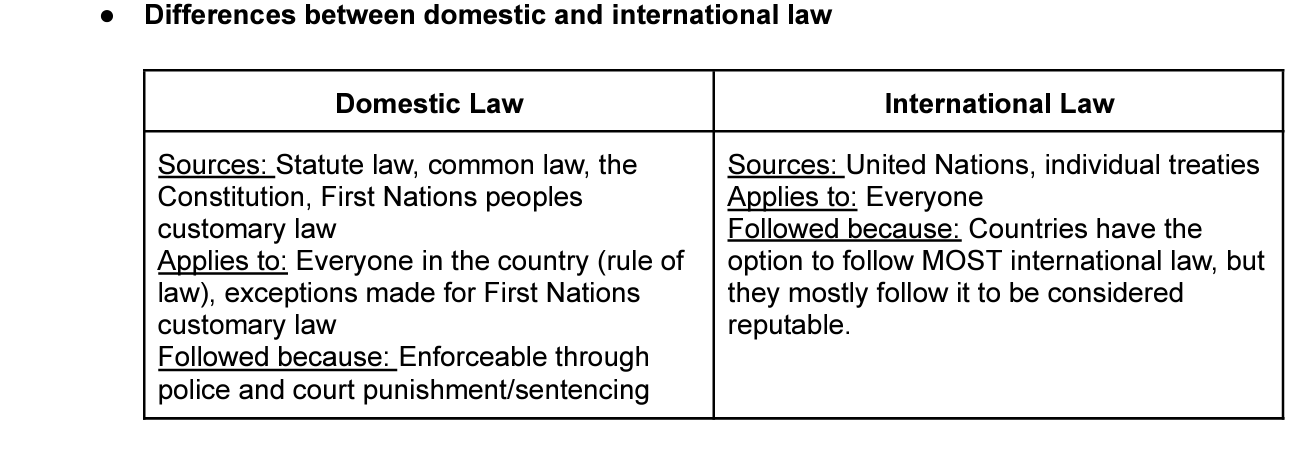Legal Studies Exam 1 (Part 2)
1/13
There's no tags or description
Looks like no tags are added yet.
Name | Mastery | Learn | Test | Matching | Spaced |
|---|
No study sessions yet.
14 Terms
Outline the origin of Common Law
Common law originated in Britain around 1000 years ago as a result of the 1066
Norman Conquest. At the time William the Conqueror wanted to return to France but was concerned about anarchy breaking out in Britain so he sent out justices around England to settle disputes in the same ways everywhere, making a set of common laws.
Examine the Hierarchy and Jurisdiction of state and federal courts
The court hierarchy in Australia starts with the Local Court, which handles minor criminal cases, committal hearings, and civil disputes under $100,000. The Coroner's Court investigates unexplained deaths and makes recommendations to prevent future fatalities, while the Children's Court deals with crimes involving children and child protection matters. The District Court handles serious criminal cases (excluding murder, treason, or piracy) and civil disputes between $100,000 and $750,000. The Drug Court specialises in cases involving drug-dependent offenders. The Supreme Court (Single Judge) deals with very serious criminal cases like murder, civil cases over $750,000, and matters such as wills and injunctions. The NSW Court of Criminal Appeal handles criminal case appeals and re-trials, while the NSW Court of Appeal (part of the Supreme Court) hears appeals from civil and criminal cases, usually with three judges. The High Court (Partial) reviews appeals from the NSW Court of Appeal with 1-3 judges, and the High Court (Full Court), consisting of seven judges, is the final court of appeal for major criminal and civil cases.
Outline and role and structure of Parliament

What is the Legislative Process
The executive government decides policy
The executive government then drafts and introduces bills to Parliament
The bill is considered by Parliament (House of Reps and Senate)
Bill is agreed upon by both House of Reps and Senate
Bill is then approved by Governor-General
The bill then becomes an act of parliament
What is Delegated Legislation
A law made by government agencies/ministers/councils or the GG through Acts of Parliament. Acts of Parliament delegates power to the agencies/ministers or councils.
These legislations are called a regulation, ordinance or by-law
What is Division of Powers
The division of powers in constitutional law refers to how authority is shared between federal and state governments. In federal systems, some powers are exclusive to one level, others are shared, and residual powers are left to the states. This division ensures a balance of power and allows regional governments to address local needs while maintaining national unity.
What is Seperation Of Powers
The Legislature: Power to make and change laws
The Executive: Power to put laws in action
The Judiciary: Power to make judgements on law
What is the Role of the High Court
The High Court was created by the Constitution (chapter. 3) and it hears 2 types of cases; appeals from lower courts and constitutional cases. Their job is to interpret the constitution and decide how it should be applied to certain situations. Examples include:
The WorkChoices Case (2006)
The Tasmanian Dam Case
The ACT Marriage Equality Case
Outline the extent to which Aboriginal and Torres Strait Islander Peoples’ customary laws have been integrated into Australian law
Diverse nature of customary laws: There were over 600 different First Nations groups, each with unique laws, though some common features existed.
Customary Law: Customary law is based on principles and practices passed down through generations and treated as binding within a community.
Spiritual basis, significance of land and water: First Nations' laws are deeply spiritual, with land and water considered essential for life and community.
Family and kinship: Kinship extends beyond family, governing relationships, obligations, and roles within the community.
Ritual and oral traditions: Rituals and oral traditions, like mourning and initiation rites, are central to First Nations' cultural and legal practices.
Mediations and sanctions: Disputes are resolved through mediation, and sanctions like spearing or social ridicule are used for punishment and retribution.
Relevance to contemporary Australian law: Integrating First Nations law with Australian law is challenging, particularly in issues like double punishment and community vs. legal system responses.
Spiritual law: Spiritual law is seen as harder to corrupt due to its deep connection to The Dreaming and cultural practices.
Significance of land and water: Aboriginal law focuses on custodianship and protection of land, rather than individual ownership.
W.E.H. Stanner quote: Stanner emphasized that taking land from First Nations people meant taking their spiritual and cultural foundation.
Relevance to contemporary Australian law (issues): Issues include double punishment and a lack of understanding in the non-Indigenous community regarding First Nations legal practices.
Issues with integration: The integration of First Nations customary law with mainstream legal systems faces challenges like a lack of procedural fairness, trial by ordeal, and unacceptable punishments.
Distinguish between domestic and international law

Examine the impact of state sovereignty
State sovereignty is the power of the state to make choices and decisions about what happens within the borders. Every nation is equal in that it has a right to control itself and make its own decisions and laws without outside interference.
Jus cogens: International customary law that is so common and important that it is above all other national and international law
Examine the sources of international law
International customary law
Jus cogens: International customary law that is so common and important that it is above all other national and international law
Instruments declarations and treaties)
Instrument: Document that has authority
Declarations: occur when a group of countries join together and propose ideas about how things should be, they are non-binding
Treaties: agreements that occur between two countries (bilateral) or more than two (multilateral) and are usually known as conventions (e.g. CROC) They have to be registered with the United Nations and can be about anything. They are not law enforceable automatically.
Legal decisions, writings
Decisions: The International Court of Justice (IC) makes international legal decisions. They do not use the doctrine of precedent and decisions made are not binding on future cases.
Writings: Judges and UN organisations write stuff about international law because it is not always clear what is and is not legal.
Describe the role of the various organisations involved in international law
United Nations
The UN was formed after WW2 to prevent WW3. The basic structure is represented below but it is more complex in reality.
Courts and tribunals
Role: settle legal disputes submitted by member states
The main international court is the ICJ and it is made up of 15 judges from countries. However, the issue with international courts is that decisions car enforced unless considered a threat to peace.
Intergovernmental organisations
Role: create a mechanism for world's inhabitants to work more cohesively and deal with social and economic issues.
Examples: UN, EU, OAS, AU, Arab League, NATO, ASEAN
Non-government organisations
Role: aim to protect and develop human rights internationally
Examples: Red Cross, Amnesty International
Examine how international law impacts on and is incorporated into Australian law
Relevance to contemporary Australian law
International law is not a part of Australian Law
Our laws (if clear enough) can be against any of our international obligations
Australian courts can refer to international law when no statute is present (e.g. Mabo No.2 1996)
When the High Court is interpreting Australian law, it is supposed to align with our international obligations (e.g. The Queen v Tang (2008), Teoh (1995))